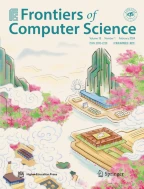Conclusion
Inspired by the collective intelligence observed in natural swarms, where individual proactive actions contribute to superior global performance, we advocate for a shift towards Swarm DL. By harnessing the potential of physically adjacent mobile devices in IoT scenarios, we present DeepSwarm, a closed-loop system framework architecture. DeepSwarm facilitates bidirectional optimization between data acquisition and processing, aiming to push the performance boundaries of on-device DL Specifically, DeepSwarm addresses the requirements of proactive Swarm DL by decomposing them into layers: self-organized swarm data acquisition and self-adaptive, self-evolutionary swarm data processing.
Explore related subjects
Discover the latest articles, news and stories from top researchers in related subjects.References
Liu S, Guo B, Fang C, Wang Z, Luo S, Zhou Z, Yu Z. Enabling resource-efficient AIoT system with cross-level optimization: a survey. IEEE Communications Surveys & Tutorials, 2024, 26(1): 389–427
Ma S, Pei J, Zhang W, Wang G, Feng D, Yu F, Song C, Qu H, Ma C, Lu M, Liu F, Zhou W, Wu Y, Lin Y, Li H, Wang T, Song J, Liu X, Li G, Zhao R, Shi L. Neuromorphic computing chip with spatiotemporal elasticity for multi-intelligent-tasking robots. Science Robotics, 2022, 7(67): eabk2948
Hu Y, Fang S, Lei Z, Zhang Y, Chen S. Where2comm: communication-efficient collaborative perception via spatial confidence maps. In: Proceedings of the 36th Conference on Neural Information Processing Systems. 2022, 4874–4886
Bonabeau E, Dorigo M, Theraulaz G. Swarm Intelligence: from Natural to Artificial Systems. Oxford: Oxford University Press, 1999
Mullapudi R T, Chen S, Zhang K, Ramanan D, Fatahalian K. Online model distillation for efficient video inference. In: Proceedings of 2019 IEEE/CVF International Conference on Computer Vision. 2019. 3572–3581
Chen Y, Li W, Sakaridis C, Dai D, Van Gool L. Domain adaptive faster R-CNN for object detection in the wild. In: Proceedings of 2018 IEEE/CVF Conference on Computer Vision and Pattern Recognition. 2018. 3339–3348
Acknowledgements
The work was supported by the National Science Fund for Distinguished Young Scholars (62025205), the National Natural Science Foundation of China (Grant Nos. 62032020, 62102317), CityU APRC Grant (9610633).
Author information
Authors and Affiliations
Corresponding author
Ethics declarations
Competing interests Bin Guo is an Editorial Board member of the journal and a co-author of this article. To minimize bias, he was excluded from all editorial decision-making related to the acceptance of this article for publication. The remaining authors declare no conflict of interest.
Additional information
Electronic supplementary material Supplementary material is available in the online version of this article at journal.hep.com.cn and link.springer.com.
About this article
Cite this article
Liu, S., Guo, B., Wang, Z. et al. DeepSwarm: towards swarm deep learning with bi-directional optimization of data acquisition and processing. Front. Comput. Sci. 19, 193501 (2025). https://doi.org/10.1007/s11704-024-40465-z
Received:
Accepted:
Published:
DOI: https://doi.org/10.1007/s11704-024-40465-z
